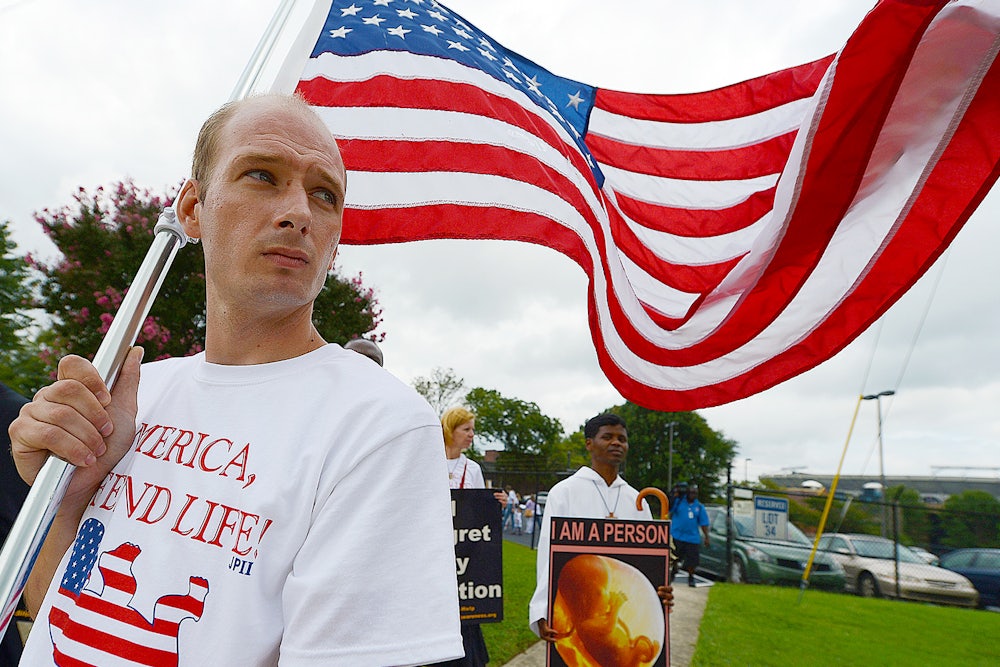As the Democratic Party attempts to chart a way forward in the wake of the 2016 election, it has found itself embroiled in an internecine battle over one of the most divisive issues in American politics: abortion. At its national convention last year, the party adopted the most pro-choice platform in its history, calling for an end to the ban on federal funding for abortion. That’s somewhat at odds with recent statements from Democratic leaders, who argue that the party must embrace a more diverse set of views on reproductive rights if it is to have any hope of attracting voters in rural parts of the country.
“This is the Democratic Party. This is not a rubber stamp party,” Nancy Pelosi told The Washington Post in May. “My family, extended family, are not pro-choice. You think I’m kicking them out of the Democratic Party?” In July, Democratic Congressional Campaign Committee Chair Ben Ray Luján said there would be no “litmus test” on abortion for candidates in 2018. Democrats need to pick up 24 seats to win back control of the House. “We’ll need a broad coalition to get that done,” Luján told The Hill.
Pro-choice activists have reacted with dismay. “Encouraging and supporting anti-choice candidates leads to bad policy outcomes that violate women’s rights and endanger our economic security,” said Ilyse Hogue, president of NARAL Pro-Choice America. Certainly, with abortion access under assault from pro-life radicals, the issue is one Democrats cannot concede. But such purity tests do the party no favors. At the state level, the Democratic Party is weaker than it has been in nearly a century, making it ill-equipped to fight local abortion restrictions. To truly protect reproductive rights, Democrats need to figure out how to make inroads in red states and conservative communities—which means figuring out how to connect with voters who don’t necessarily share their views.
Fortunately for Democrats (and women), abortion might not be the wedge issue of legend. Overall, Americans are sharply divided in their views on abortion: 75 percent of Democrats say it should be legal in all or most cases, while 65 percent of Republicans favor abortion restrictions, according to the Pew Research Center. But Americans are more concerned about other issues right now. During the presidential election, voters ranked abortion last on the list of topics they wanted Hillary Clinton and Donald Trump to debate. Terrorism, the economy, education, and jobs top the public’s list of priorities.
Democrats have continued to allow abortion to divide them, however. In the spring, Democrats appeared to have a competitive chance to win the mayoral race in Omaha, Nebraska—a sign of life in a decidedly red state. The party’s candidate, Heath Mello, argued for raising the minimum wage and protecting undocumented immigrants, and seemed like the future of the party. “You can’t find a more progressive rising star in the Midwest,” says Jane Kleeb, chair of the Nebraska Democratic Party. But as a state legislator, Mello had voted to ban abortion after 20 weeks and co-sponsored a bill requiring women to view a fetal ultrasound before having an abortion. Pro-choice activists vehemently opposed his candidacy, and Mello ultimately lost to Jean Stothert, a pro-life Republican.
This doesn’t mean Democrats should field candidates in the mold of Joe Manchin, who entered the West Virginia gubernatorial race in 1996 as an explicitly anti-choice candidate (though his views on the issue have softened some in recent years). Today’s pro-life Democrats might resemble Tim Kaine or Joe Biden: politicians who personally oppose abortion on religious grounds but who have refused to impose their beliefs on others. Even Mello, during his mayoral race, said that despite his past positions, “I would never do anything to restrict access to reproductive health care.”
But Democrats don’t simply need to find candidates who can better connect with conservative voters on kitchen-table issues. They must also persuade voters to support abortion rights. While Americans are sharply divided on the issue overall, the middle ground is much less polarized: 36 percent of conservative and moderate Democrats oppose abortion, as do 45 percent of moderate and liberal Republicans. “Here in Texas, people do not identify as overtly pro-choice or overtly pro-life,” says Alexa Garcia-Ditta, communications director for the state chapter of NARAL Pro-Choice. “That’s a very black-and-white treatment of the issue.”
By speaking to conservative voters in a more direct, personal, and nuanced way, Democrats can actually change hearts and minds. In Texas, for example, where personal rights are sacrosanct, voters have been receptive to arguments about government overreach. “People get very upset that someone has to jump through all these hoops to access health care and see their personal decision through,” Garcia-Ditta says. And in Kentucky, ideological opposition to abortion declines when voters are presented with the practical realities of having just one abortion provider left in the state. It comes down to getting people to understand that without access to legal abortion, the consequences for their friends, neighbors, and loved ones can be fatal. Abortion must remain legal not simply as a matter of principle, but because without legal options, people will take matters into their own hands.
As it looks to the future, the Democratic Party doesn’t need to choose between supporting reproductive rights and reaching out beyond its liberal, urban base. It can do both. It just needs to rethink how it delivers its message.
